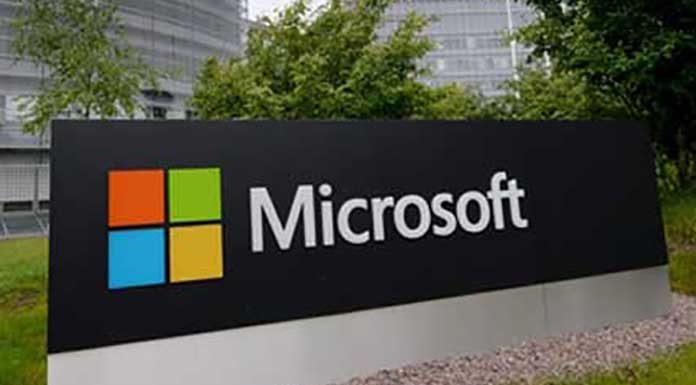With the aim to catalyse its businesses from government vertical, Microsoft India in an event in Hyderabad showcased several projects that make use of the company's cloud-based artificial intelligence, cognitive services and Internet of Things (IoT) technologies. The US-based firm said that these technologies can change the way citizens, enterprises and governments engage in healthcare services, agricultural practices, and education in India. The tech giant informed that many of these applications are being tested out or used in the Indian states of Andhra Pradesh, Karnataka, Telangana, Punjab, Tamil Nadu and Haryana among others. “These AI, cognitive technologies and IoT applications can help in India's inclusive growth,” said Sriram Rajamani, Managing Director of Microsoft Research India.
Key solutions and projects run by Microsoft aimed at Digital India
Project FarmBeats: Microsoft FarmBeats is a research project for agriculture that enables seamless data collection from various sensors, cameras and drones. It comprises two broad areas – a data-acquisition system consisting of drones and sensors and, a data-analysis system consisting of connectivity pieces, cloud storage, and predictive analysis.
AI for farming: Microsoft and ICRISAT announced the results of the second phase of the pilot of their AI-based Sowing App for farmers. The program was expanded to touch more than 3000 farmers across the states of Andhra Pradesh and Karnataka during the Kharif season of 2017 for a host of crops including groundnut, ragi, maize, rice and cotton, among others. The increase in yield ranged from 10% to 30% across crops. The Sowing App was developed to help farmers achieve optimal harvests by advising on the best time to sow using data about weather conditions, soil quality and other indicators.
“We are excited about the results that have emerged from the use of the Sowing Application and Personalized Village Advisory Dashboard. We have strengthened our partnership with Microsoft to help small holder farmers and give a boost to our AI-powered agriculture initiative in a big way. The application of the intelligent cloud is a significant start for digital agriculture and we look forward to expanding this further,” said Dr. AVR Kesava Rao, Honorary Fellow and Senior Scientist, Agroclimatology, ICRISAT.
HAMS (Harnessing AutoMobiles for Safety): A virtual harness for vehicles that focusses on two factors that are critical to road safety—the mental state of the driver-including distraction and fatigue, and his /her driving relative to other vehicles. It employs the front and back cameras of a dashboard-mounted smartphone, the phone's GPS and inertial sensors, and an On-Board Diagnostics (OBD-II) scanner. Project HAMS is being used by Institute of Driving and Traffic Research (IDTR) – a joint venture between the Department of Transport of State Governments and Maruti Suzuki India.
Interactive Cane: This AI-powered Interactive Cane to aid people with visual impairment. Microsoft Research is experimenting by adding several sensors to existing canes, and adding gesture recognition to the cane. Interestingly, Microsoft Research is doing these using sensors added to the cane, and an AI agent on a micro controller with very low resources on the cane itself, thereby making the cane an intelligent edge device. We believe that more such applications of ML on edge will become feasible in the coming years.
IoT monitoring of water quality: Authorities across states have turned to IoT to monitor drinking water quality for its citizens. Indian ISV TechSpan Engineering has implemented a monitoring system built on the Azure IoT platform, using sensors provided by the Austrian firm s::can and their India Partner Aaxisnano. Using the power of the Microsoft cloud, IoT and data, the solution taps into the robust s::can sensors to provide measurements across 17 parameters – from Chemical Oxygen Demand (COD) and Biological Oxygen Demand (BOD), Chloride and Fluoride levels to temperature and color.
The solution is currently being used for monitoring drinking water quality online by the Bangalore Water Supply and Sewerage Board (125 stations) and Karnataka Urban Water Supply and Drainage Board (KUWSDB) in Hubli–Dharwad & Bijapur (3 stations), Online surface water quality monitoring by Central Pollution Control Board, New Delhi (44 stations) and Central Water Commission, New Delhi (3 stations), Online industrial pollution monitoring (1500+ stations), Online sewage treatment and flow monitoring by Delhi Jal Board (36 stations).
Smart Lighting in Jaipur: Microsoft Azure IoT is also powering India's first Smart Street Lighting Project for the pink city of Jaipur, underscoring Microsoft's mission of transforming public spaces digitally. The Jaipur Municipal Corporation (JMC) operates and maintains over 100,000 public street lights within the city. However, one of three in these lamps did not work and many others functioned poorly, leading to several areas of the city being in the dark. Microsoft's partner Samudra LED has now deployed a customized Microsoft IoT-platform-based solution created by ISV Precimetrix to monitor, control and manage smart LED public street lights. The project will benefit 1.65 million people through improved street lighting and a reduction of greenhouse gas emissions by 36,750 metric tons/year. It will also result in $1 million per year in fiscal savings accrued to the government due to reduced energy consumption.
AI for local language computing: Starting with Project Bhasha in 1998, Microsoft has been consistently working to provide local language computing in Indian languages. Microsoft Office and Windows support 11 Indian language scripts and overall supporting 22 Indian languages. Bing allows users to browse in nine Indian languages. With the help of its AI technologies, Microsoft is now making translation and speech recognition across several Indian languages.
Microsoft's SwiftKey, which allows text input in as many as 24 Indian languages and dialects including Marwari, Bodo, Santali and Khasi, brings AI in the keypads to enable faster, predictive writing. It also allows mixed language typing in English and Hindi. Indian English and Hindi speech recognition is available as part of Microsoft Cognitive Services as well as Bing App for Android. Text to speech translations currently includes such capabilities in Hindi and Tamil on Microsoft Narrator, on Windows 10. Microsoft PowerPoint uses AI to translate full presentation decks from English to Hindi, Bangla and Tamil.











